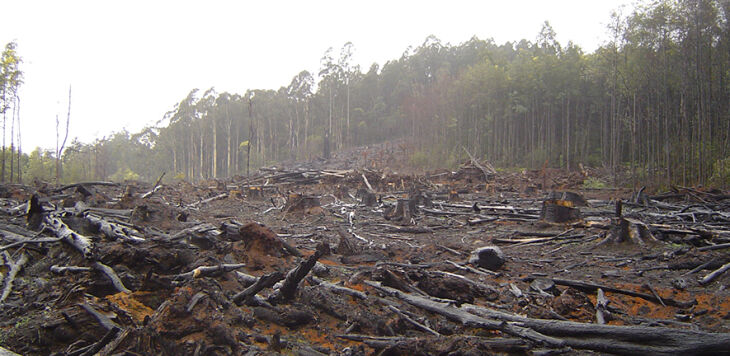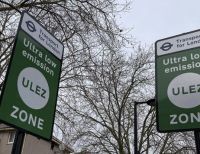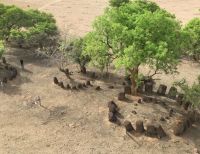A major scientific assessment, published by the Global Forest Expert Panels (GFEP) Programme, led by the International Union of Forest Research Organizations (IUFRO), has evaluated the world’s progress on reducing emissions from deforestation and forest degradation.
The report analyses the past 10 years of REDD+ implementation – a global action plan to reduce emissions from deforestation and forest degradation primarily in tropical and sub-tropical regions – with respect to forest governance, carbon measurements and effects on biodiversity and livelihoods. The findings are presented during World Forestry Congress week, taking place this week in Seoul.
One major conclusion is that while REDD+ has provided a convenient umbrella for many forest and land use related activities aimed at reducing deforestation and forest degradation – and associated greenhouse gas emissions – the interlinkages and complexities of relationships between forests, land use and climate are profound.
The report, which aims to inform ongoing policy discussions on the 2030 Agenda for Sustainable Development, comes at a pivotal time: Human-induced climate change and increases in extreme weather events are impacting nature and people faster and more severely than had been expected 20 years ago.
However, there is still a chance to reverse this trend and avoid further global warming, according to the Intergovernmental Panel on Climate Change. This requires drastic reductions in greenhouse gas emissions, particularly CO2, most of which stem from burning fossil fuels.
Forests also play an important role in the global carbon cycle: they absorb carbon as they grow and emit carbon when they are destroyed. Every year nearly one-third of the global carbon emissions produced by humans can be absorbed by forests, yet deforestation and forest degradation are responsible for up to 10% of the annual man-made CO2 emissions.
In addition, interest in forests as a ‘nature-based solution’ has probably never been higher and the number of initiatives aimed at conserving, sustainably managing and restoring forests has increased considerably.
“This report is being launched at a very important moment, and feeds directly into international discussions on climate change and biodiversity,” said lead author Professor Bhaskar Vira, Head of Cambridge’s Department of Geography. “There is an urgent focus on the role of land use and forests as part of our transitions towards a net zero future, and on the contributions that forests can make to biodiversity and livelihoods.
“REDD+ will only be effective if we learn the lessons from existing efforts and interventions in the forest sector, and the challenges they have faced. This report offers key insights into the ways in which new and innovative sources of funding and finance should be organised and governed to ensure equitable and sustainable future pathways that benefit all, especially the Indigenous Peoples and local communities who live in and around forests.”
In addition to promoting forest protection and carbon sink enhancement, a key focus of REDD+ is to move the scope of interventions beyond climate impacts towards an integrated view of climate, biodiversity and livelihoods. REDD+ can deliver numerous environmental benefits, including reduced soil erosion, enhanced water quality and quantity, and increased resilience to drought and floods. It can potentially deliver important biodiversity benefits, although the availability of up-to-date biodiversity data remains a major challenge.
“Such benefits have significant economic importance and may increase both the value of REDD+ programs and people’s willingness to engage with them. However, in the implementation of REDD+, greater attention to biodiversity and livelihood outcomes is needed,” said lead author and IUFRO President John Parrotta of the USDA Forest Service.
Evidence from social evaluations of REDD+ interventions indicates that, where direct and indirect benefits are clearly visible to local stakeholders, and have been delivered, community engagement is strong and projects have achieved positive carbon and social outcomes, at least in the short term. Furthermore, explicit attention to rights and tenure issues provides more transparent mechanisms for the reporting and monitoring of environmental and social co-benefits, as well as better, more equitable outcomes, particularly for more vulnerable communities.
Case studies from Indonesia show that insecure tenure can exacerbate distrust between resource users and the government, and can keep local people from further participating in REDD+ activities. Evidence from Latin America and the Caribbean suggests that deforestation is lower in areas where Indigenous and Tribal Peoples’ collective land rights are recognised.
“Since 2012, implementation of REDD+ has advanced considerably in many countries but ultimately it is REDD+ governance that determines its performance. Yet, governance is distributed across a complex landscape of institutions with different sources of authority and power dynamics that influence its outcomes,” said GFEP Programme Coordinator Christoph Wildburger.
REDD+ is being applied in a wide diversity of contexts with an equally wide diversity of governance strategies, which are changing over time. Brazil, for example, was initially a leading global source of deforestation, then a world leader in reducing deforestation, and is now experiencing rising deforestation once again. While Brazil’s federal government has played a key role in these swings in deforestation rates, a number of Brazilian states are pursuing their own REDD+ initiatives with positive outcomes. Ghana, a relatively small country where deforestation has been strongly linked to the production of cocoa for export, is pursuing the ‘world’s first commodity-driven’ REDD+ strategy with private sector investments in ‘climate smart cocoa’. Both Brazil and Ghana illustrate the important role that actors other than national governments may play in shaping REDD+, such as sub-national state actors or private companies trading in forest risk commodities like cocoa.
Adapted from an IUFRO press release.
















